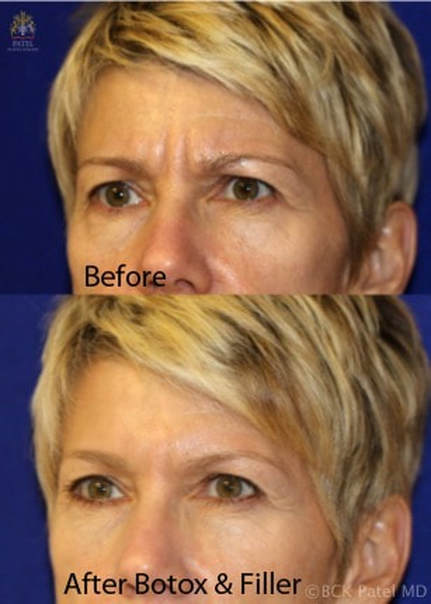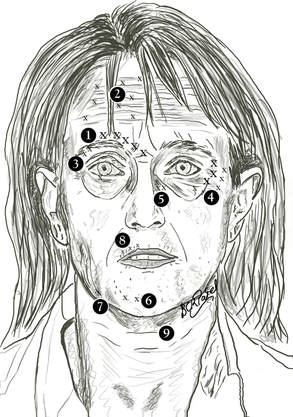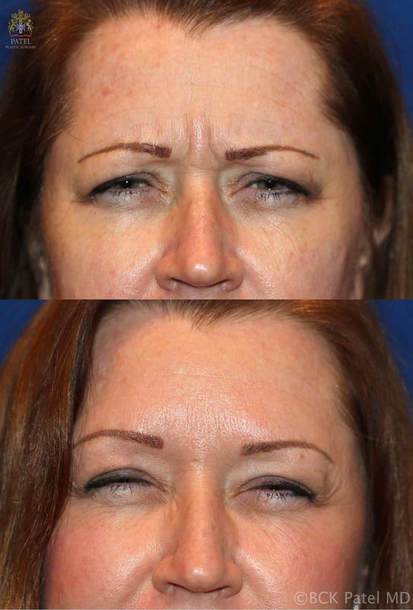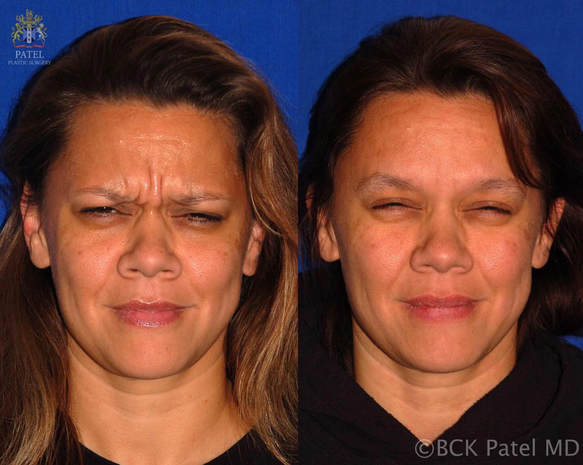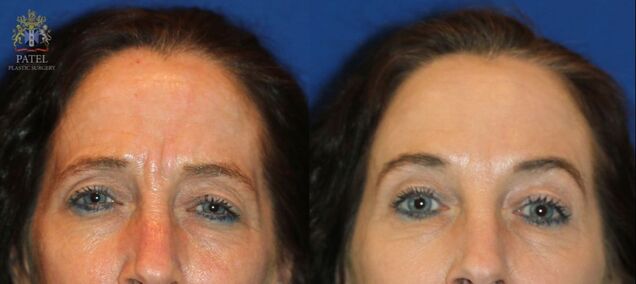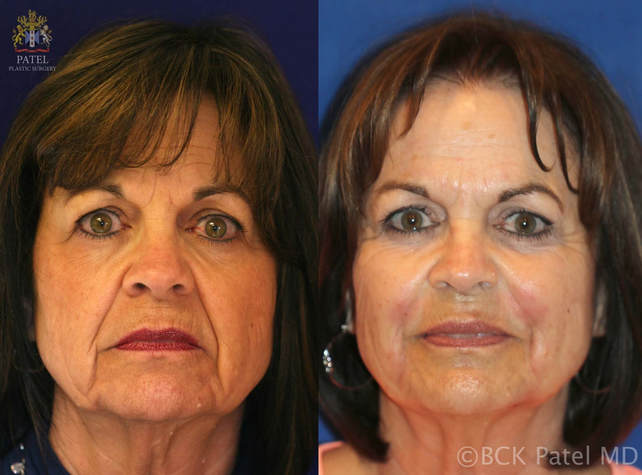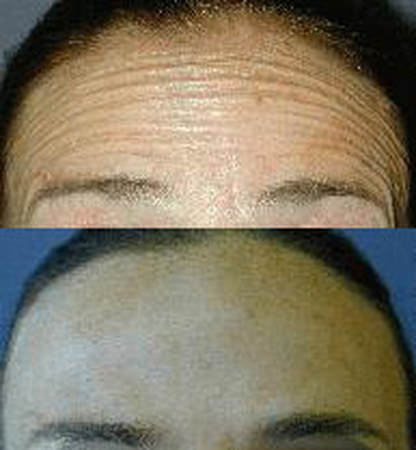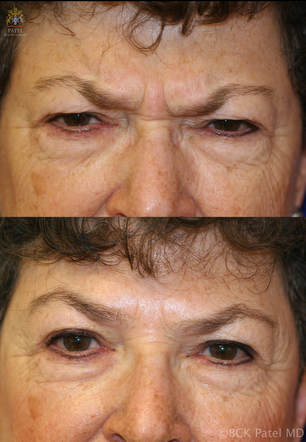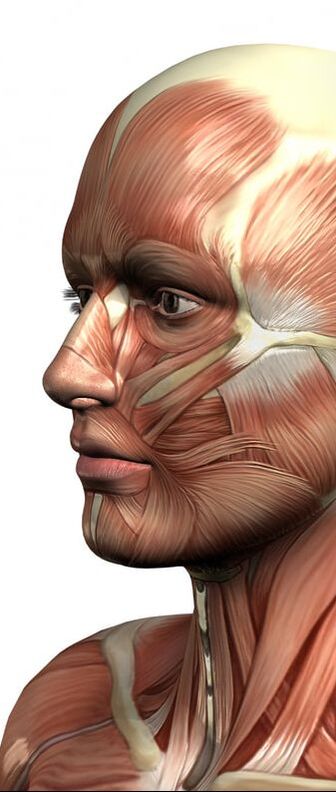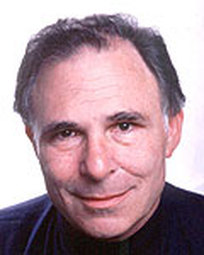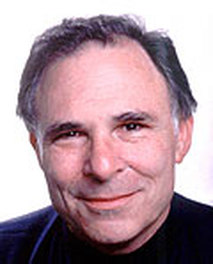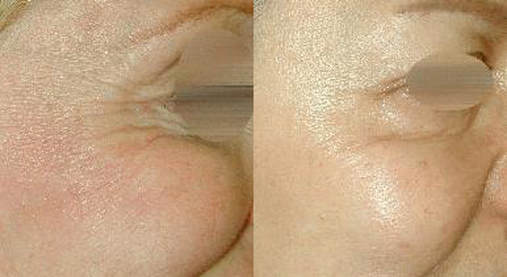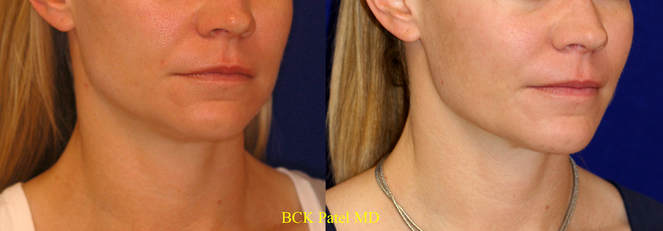|
Movement of our facial muscles (called animation) allows us to smile, frown and grimace. Movement of muscles moves the overlying skin, which results in dynamic lines or wrinkles. In our youth, these are not visible once we stop animating the face. However, over time, changes in skin where these lines of animation form result in more permanent lines. For example, the constant use of the forehead leads to horizontal forehead lines, and smiling results in radiating lines on the outer corners of our eyelids, commonly called Crow’s feet. Vertical lines between the brows are a result of overaction of our frown muscles and are commonly called elevenses. There are numerous other areas on the face where major or minor lines or wrinkles may form. With an accurate knowledge of anatomy and physiology of human facial muscles and skin, it is possible to modulate some of these lines and bulges with considered use of botox. This is not injection by the numbers: faces differ, sexes differ, the degree of overaction of muscles and the depth of lines and prominence of bulges also differ. This is where the careful use of toxins gives excellent results. Botox is one of such toxins. There are several different types of botulinum toxin on the market, including Botox, Dysport, Myobloc and Xeomin.
|
What is botox?Botox is a one of a group of chemicals termed “neurotoxins”. Simply put, it is a chemical that blocks the transmission of impulses from a nerve ending to a muscle. Therefore, the muscle is not able to function when such
an injection is administered. what is the effect of botox injections?As the muscle is unable to contract after the injection of botox, several effects are seen. Where muscles tend to cause a bulge, like the frown muscles, these bulges are relaxed. Where the contracture of the muscle causes a groove, like forehead grooves and frown line grooves, these become shallow (during the duration of the effect of the injections). And because of the decrease in contracture of the muscle, the overlying skin wrinkles also look better. The effect should be to leave you looking relaxed and rejuvenated, with fewer worry and frown lines, but at the same time leave you with the ability to still express yourself. This is very important so as to avoid the overly “botoxed” face, so common these days.
|
How do I know if I am a candidate for Botox?
Walk-in, walk-out, injections by the numbers are the reasons why there are so many poorly performed botox injections. Not everyone needs botox for improvement of changes on the face. At times, other modalities like chemical peels, lasers, fractionated lasers, fotofacial lasers, or even surgery may be better for you. An assessment of your concerns and a careful examination of the dynamic and static lines, grooves and bulges, together with any discoloration of the skin from sun damage and other conditions allows us to determine what the best treatment might be.
What age do I have to be to
|
Will I bruise?
Remember that the face is full of vessels. We use cooling of the skin to reduce the risk of bruising. Some areas are more likely to bruise than others: for example, the lower eyelids and the crow’s feet areas are vey vascular and may bruise more easily than the forehead or the frown muscle injections. After the injections, use of ice can reduce bruising.
I hate needles: will it be painful?
None of our patients has ever jumped up and run away! We apply an anesthetic cream when patients want it. Our regular patients have an anesthetic cream prescribed which they apply before they leave home: this reduces the sensitivity of the skin sufficiently to make the injections almost pleasant! We also apply ice and we have a Zimmer cooling device which is very helpful in reducing bruising as well as discomfort.
How long will the effects of the injections last?
Although there are scientific studies that show that regeneration of the nerve endings allows the muscles to work again as early as two-and-a-half months after injections, we find that the benefits of the injections often last three to five months. Of course, the effects of the injections don’t just stop suddenly but wear off gradually.
How often will I need injections?
Most patients find that getting injections every three to four months is ideal. However, if your lines, wrinkles and bulges are not too prominent, you can easily go longer. We always assess your results after a month when we first inject you to ensure that you get the best possible result and also to guide you as to how long the effects may last.
If I keep on getting the injections, will I eventually
not need them any more?
There is no evidence that the nerves stop producing new endings: therefore, it is unlikely that you will achieve Nirvana.
I have tried botox but it does not work on me?
We see many patients who tell us that they have been getting botox but that it does not work on them. When we have injected these patients using our strict attention to concentration and the number of units needed, we have never seen anyone in whom botox does not work! Also, it is not a matter of working or not working, but also subtleties of the effect of the injections have to be taken into account. When artistically injected, it is possible to leave expression but also a very pleasing relaxed and rejuvenated look. Injecting botox is like being an expert at playing a musical instrument: it is possible to achieve many effects with appropriate knowledge, skill and attention to detail!
Who will inject me?
In many clinics, such injections are delegated to nurses or aestheticians. A detailed knowledge of the 43 facial muscles is vital, however, in order to inject in the right spot, to the right depth, and using the correct combination. The panoply of movements which are a result of groups of muscles acting in unison but also individually makes it easy to inject in the wrong group of muscles, or to get the balance wrong. As we not only learn the function and actions of these facial muscles in detail but regularly operate upon faces with facelifts, browlifts, blepharoplasties, etc, we believe that the most trained and knowledgeable person should inject: to that end, you will only be injected by Dr. Patel.
"Well, the last time I had a picture taken I could hardly see my eyes because of the weight of heavy eyelid. Then I paid attention to how I was actually using my eyes and I really noticed when I was looking at anything especially the computer I was straining my forehead to see better. Since I have had it done I no longer have to lift the forehead and tilt my head to see. It is amazing! I love..." D. Rock 63 Yrs Old with Fat Droopy Eyes - Salt Lake City, UT
Facial Muscles
Why is it important to know where to inject?
Whether I get injections into the forehead, the frown lines or the smile lines, or all three, can my smile be affected? How is it different?Again, the orchestra must play in unison and must be synchronous. Ever noticed how there are basically two types of smiles: a genuine smile and a fake one? This distinction has been of interest to researchers for quite sometime now. In fact, the genuine smile has a name.
It's called the "Duchenne smile," named after the French physician Guillaume Duchenne, who studied the physiology of facial expressions in the nineteenth century. The Duchenne smile involves both voluntary and involuntary contraction from two muscles: the zygomatic major (raising the corners of the mouth) and the orbicularis oculi (raising the cheeks and producing crow's feet around the eyes). A fake smile or, as I like to call it, a "Say Cheese" smile involves the contraction of just the zygomatic major since we cannot voluntarily contract the orbicularis oculi muscle. |
This is interesting, but why is it so? What's going on upstairs that creates these two different smiles?Scientists have discovered that these two types of smiles are actually controlled by two completely different parts of our brain. When a patient with damage to the motor cortex on the brain's left hemisphere attempts to smile, the smile is asymmetrical, with the right side of the smile not moving as it should. However, when that same patient spontaneously laughs, the smile is normal with no asymmetry. This means that the genuine smile is controlled by some other part of the brain. Now, when a patient with damage to the anterior cingulate (part of the limbic system) in the left hemisphere attempts to smile, there is no asymmetry. The smile is normal. However, when that same patient tries to smile spontaneously, the asymmetry appears.
Thus, the “Say Cheese” smile is controlled by the motor cortex while emotion-related movements, like the Duchenne smile, is controlled by the limbic system (the emotional center of the brain).
But, does it truly matter if your smile is contrived or authentic?
Apparently, it matters a great deal to your life satisfaction (and quality of marriage, ability to make friends and how you are perceived in business and life!) “Say Cheese” smiles, and the non-smilers.
The researchers followed up with these women at age 27, 43, and 52 and asked them questions about their life satisfaction and status of their marriage. They found that the Duchenne smile predicted positive outcomes in marriage and well-being up to 30 years later.
So remember, a genuine smile will probably make you happier than you think! THAT is why it is important to know the orchestra members, the orchestra and the hall within which they play!
References:
Thus, the “Say Cheese” smile is controlled by the motor cortex while emotion-related movements, like the Duchenne smile, is controlled by the limbic system (the emotional center of the brain).
But, does it truly matter if your smile is contrived or authentic?
Apparently, it matters a great deal to your life satisfaction (and quality of marriage, ability to make friends and how you are perceived in business and life!) “Say Cheese” smiles, and the non-smilers.
The researchers followed up with these women at age 27, 43, and 52 and asked them questions about their life satisfaction and status of their marriage. They found that the Duchenne smile predicted positive outcomes in marriage and well-being up to 30 years later.
So remember, a genuine smile will probably make you happier than you think! THAT is why it is important to know the orchestra members, the orchestra and the hall within which they play!
References:
- Damasio, A. (2006). Descartes' Error. Vintage (Rand).
Before and After
"I had a excellent eye lift done by Dr. Patel. He knows what he is doing and is very pleasant. Dr.Patel was easy to get an appointment and he works with you. The office staff was very pleasant and made you feel calm." D. Gull Highly recommended for eye lift surgery - Salt Lake City, UT
Are there any side-effects?
- Bruising and swelling may occur, but that may happen whenever injections are administered.
- Asymmetry: on occasion, you may notice a more or less effect of the botox on one or the other side. This is really not a side-effect and can easily be corrected. It is best to wait four weeks to ensure that one is not over-injecting.
- Ptosis: this is a droop of the upper eyelid. This may happen in about 3% of injections when administered in the frown area for the elevenses. If this happens, the droop disappears within a few weeks. Although there is a drop that can be used to lift the eyelid temporarily, your pupil may look a little bigger after the use of this drop. Ptosis is not a serious side-effect and in most cases disappears in two to three weeks.
- Allergic reaction: Although there have been reports of allergic reactions, I have never personally seen one. A few patients sometimes develop a tiny dot at the site of the injection which may be a little tender to the touch. These just disappear within a few days.
- Oedema: this is swelling. Remember, our facial muscles allow us to pump fluid away from certain areas. It is because our lower eyelid and cheek muscles move that we are able to reduce the overnight lower eyelid puffiness that many people get. After botox injections in certain areas, especially the lower eyelids and the smile lines, some degree of puffiness may occur. Again, this is not severe and disappears within a few days.
- Ache and headache: a few patients report a slight headache after the injections for a few hours or a few days. This is unusual. More often, patients notice that those that suffer from frontal headaches actually get relief.
Schedule Your Consult Today |
|
Visit Patel Plastic Surgery on YouTube for more free tips!
Stay Connected With Us On Social Media
|
Find UsLocations:
Dr. BCK Patel MD, FRCS 1025E 3300S Salt Lake City, Utah 84106, USA (801) 413-3599 (phone/text) E: [email protected] bckpatel.info Dr. BCK Patel MD, FRCS 585 E Riverside Dr Suite 201 Saint George, UT 84790 (435) 215-0014 E: [email protected] Quick-Link |
Let Us answer your questions |


